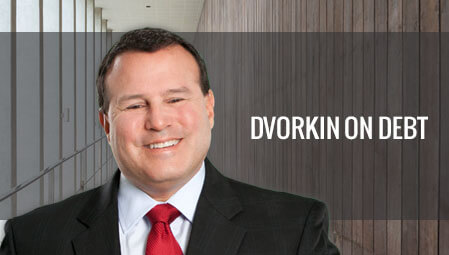When your credit cards and student loans are deferred, it’s just like being frozen in time. But there’s also a monster sneaking up behind you…
While Congress and the White House are mired in stop-and-start negotiations over a second stimulus package, one powerful tool to stave off financial ruin is thankfully continuing in both the public and private sectors: forbearance and deferment.
What are those?
Before we discuss the differences between the two terms, let’s talk about their big similarity. Both let you temporarily stop paying what you owe on your debts. Whether it’s your mortgage, your student loans or even your credit cards, forbearance and deferment means you’re excused from making payments because of an extreme situation.
These terms existed before the COVID-19 pandemic, but obviously, it’s proven to be the most extreme situation of our lifetimes. So not only is the federal government offering these debt-relief programs, so are many private lenders. Sounds great! What could possibly go wrong?
Here’s the problem
You need to think of forbearance and deferment as stopping time. Just like in sci-fi movies when time freezes and everyone stops in their tracks, the same thing happens with your lenders.
Time stops. But like in those sci-fi movies, it doesn’t stop for everyone or everything.
In many sci-fi movies, some of the characters escape the time freeze. They walk around the frozen landscape, still doing things and furthering the plot.
The same thing happens when you’re in forbearance or deferment. But what keeps moving isn’t the plot – it’s your interest rates. You see, in most cases, you’ve gotten a reprieve on paying your debt, but not on the interest accruing on your debt.
Suppose you’ve been furloughed or laid off because of the pandemic, and you have a $1,000 balance on your credit card, which has an interest rate of 20 percent. You call the number on the back of your card and ask for some help. Almost every credit card issuer is offering some type of program that either lowers or eliminates penalties, or even allows you to not make payments.
Here’s the thing: While your payments are frozen, your interest rate is not. It’s still running around, tallying up more charges that you’ll have to pay once you’re unfrozen.
Deferment vs. forbearance
So you might be asking, does this interest rate situation apply to both deferment and forbearance? And what’s the difference between them, anyway?
As Business Insider has so eloquently put it, “These two relief options are very similar, and many people use them interchangeably — yes, even lending and banking professionals.”
Mostly, though, it breaks down like this:
- Deferment usually means interest doesn’t accrue while you aren’t paying.
- Forbearance usually means interest does accrue.
Yet you can’t trust those words, because that’s all they are – words. You need to look closely at the fine print of any agreement you enter with your lenders. You might find you’re actually signing up for a weird combination of these two terms. For instance, there might be a freeze on your interest rates for several months, but then if you continue to freeze your payments, your interest rates will kick in again.
Confused yet? Let’s make it even more complicated…
A big problem with both terms
Let’s say you’re already 30 days late with a debt payment when you started forbearance or deferment. Unfortunately, your lender isn’t forgetting that fact. They won’t charge you late fees and penalties during the deferral or forbearance period, but they’re not changing your circumstances in the days beforehand.
Picture it like this: Imagine being frozen in time with one foot in a puddle. Well, for the entire time you’re frozen, you have a soggy foot.
This is why I’m so concerned with these pandemic-related programs. Don’t get me wrong, I think they’re powerful tools to keep Americans from sinking into a deep debt they’ll never climb out of. However, Americans have a history of not thinking long-term when it comes to debt.
Delaying your debts doesn’t delete them.
This needs to be a daily mantra for anyone who’s using deferment or forbearance during this pandemic. Even if you can delay payments without interest accruing, you still have a big problem: You still owe the money.
Going back to the sci-fi analogy, just because your mortgage is frozen in time doesn’t mean your home is. Just because your auto loan is deferred doesn’t mean the wear and tear on the vehicle is frozen.
When you need to start paying again, it’s likely you’ll also need to repair something in your home or with your car. So remember: Just because some debts can be frozen, the rest of your life isn’t. If you’re not careful, that sci-fi movie can become a horror movie, and your expenses will become a scary monster you can’t escape.








